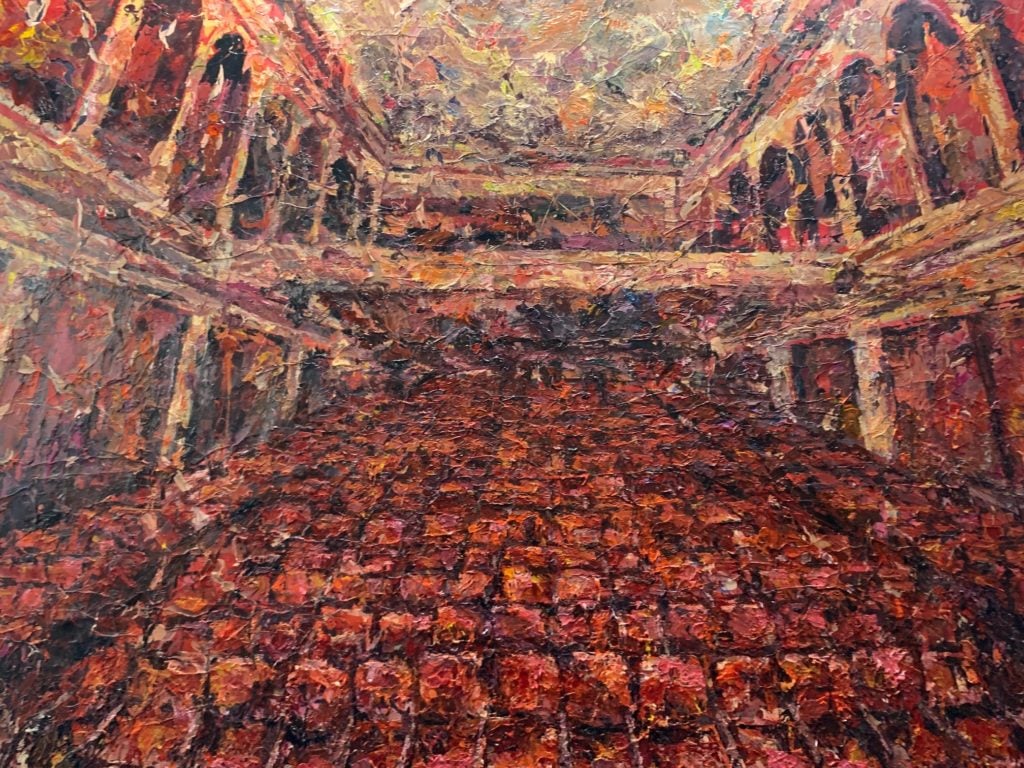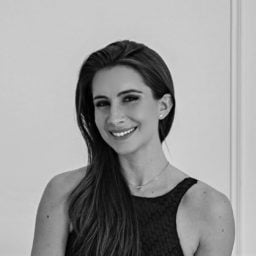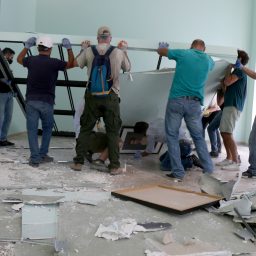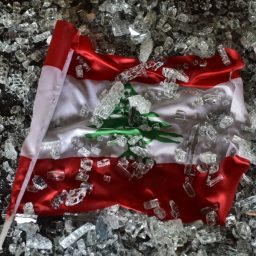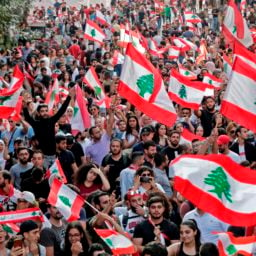Hanging in the booth of Saleh Barakat Gallery during the 10th edition of the Beirut Art Fair last week was the latest work by Lebanese painter Ayman Baalbaki: a large-scale depiction of Beirut’s Piccadilly Theatre in its present, ruined state, priced at $250,000. Painted in fleshy red and black brushstrokes, the empty, ghostly theatre in Hamra serves as a potent reminder of both the city’s rich cultural history and its present economic predicament.
Bordered by Syria to the north and east and Israel to the south, the little Levant country of Lebanon is used to continuous states of economic and political woe. Yet after its parliament approved a 2019 austerity budget in late July in an attempt to rescue the economy from spiraling debt and unlock billions of dollars in international aid, many believe the country is now experiencing some of its darkest days yet.
The measure, which led to massive protests in Beirut, is expected to trim Lebanon’s deficit to 7.59 percent of its GDP, nearly four points lower than its budget deficit in 2018, which reached 11.5 percent of its GDP. (For comparison, Greece’s deficit was more than 100 percent of its GDP in 2009, while another debt-riddled country, Ireland, had a deficit that was 14.4 percent of its GDP that year.)
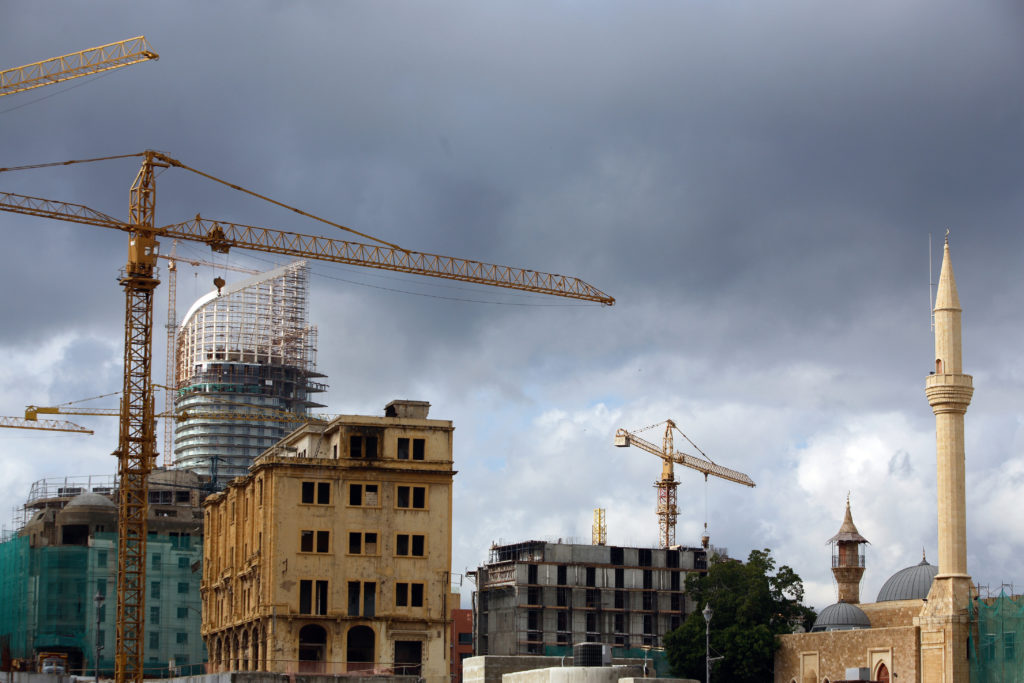
Old and new buildings mix in the skyline of the Lebanese capital during pre-austerity days back in January 2006. (Photo by Pigi CipelliArchivio Pigi CipelliMondadori via Getty Images)
The country has also been deeply affected by the Syrian refugee crisis. Lebanon, home to a population of six million, is currently hosting more than 950,000 Syrian refugees, according to the UNHCR. There are also mounting tensions with Israel—in late August, Israeli drones struck an Iranian-backed Palestinian militia in the Eastern Bekaa Valley, an act that Lebanese Defense Minister Elias Bou Saab called “the most dangerous act of aggression by Israel” since the 2006 war between Israel and Hezbollah.
“The crisis is very present and things are very tough, but what do you do in such a moment?” asks the prominent Beirut art dealer Saleh Barakat, who opened Agial Art Gallery in 1991 and a second eponymous space in the Clemenceau area of Beirut in 2017. “It’s either you close or you make a decision to continue. We took the latter decision. We want to resist by moving on in a positive way.”
One small silver lining, he says, is that artists feel less pressure to churn out commercial material, freeing them up to experiment. “We are not expecting anything,” he says. “There are no big returns from the market during a time of economic collapse, which makes everyone feel more free to create and do as they want.”
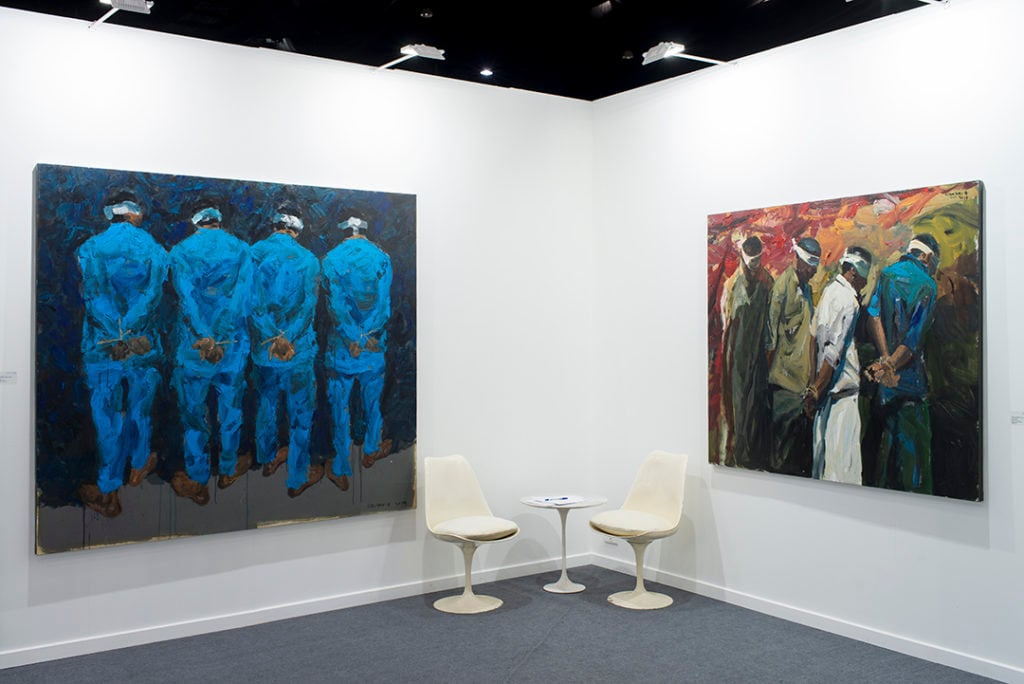
Installation view of Agial & Saleh Barakat Gallery booth at the Beirut Art Fair, photo: Paul Hennebelle.
Often, that results in art that reflects the world around them. Most recently, Barakat mounted “Interminable Seasons of Migration,” an exhibition of sculptures made out of bits of car metal by Lebanese artist Ginane Makki Bacho that portrayed the millions of refugees escaping conflict in Syria. “I wanted to show the tremendous exodus of people fleeing the war with or without expectation or hope of a secured destination,” the 71-year-old artist says.
Barakat adds: “Often abroad, I’ve been told the work is too cruel and violent—I can’t change it, that’s how a lot of the work is. I am focused on defending the vision of art in the Middle East.”
Surprising Success
Even in times of crisis, however, the art market manages to chug along, and Beirut is home to a number of deep-pocketed collectors who can ride out the storm, including economist Ramzi Dalloul, Aïshti retail magnate Tony Salamé, and insurance broker Abraham Karabajakian.
At the Beirut Art Fair, which ran from September 18 to 22, Barakat nearly sold out his booth. Works by younger artists such as Serwan Baran and Nadia Safieddine were on offer for less than $5,000, while works by Ayman Baalbaki sold for between $50,000 to $70,000. “It was a really good week,” he says. “I was very surprised.”
The fair remains under the leadership of its founder, French-born Laure d’Hauteville, who has worked to raise the profile of the event with a heightened focus on contemporary work and new international participants, including kamel mennour and Galleria Continua. In all, this year’s iteration presented 55 galleries hailing from 18 countries. Five dealers sold out their booths, according to d’Hauteville.
She claims that “the fair has not at all been affected by the economic crisis—we had more museum groups and collectors than ever.” Though the fair and a number of galleries declined to disclose specific sales and price points—often an indication of lackluster performance—many seemed genuinely and pleasantly surprised by the strong attendance of collectors and museum groups.
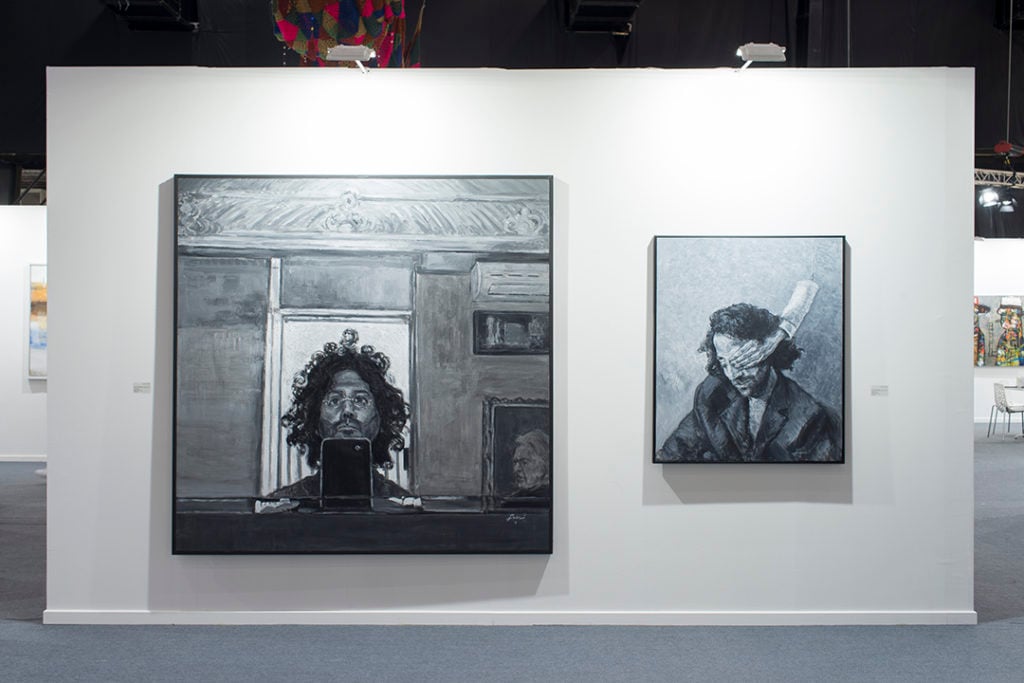
Installation view of Agial & Saleh Barakat Gallery booth at the Beirut Art Fair, photo: Paul Hennebelle.
Approximately 2,000 foreign visitors flocked to Beirut’s shores this year, hailing from such institutions as the Sao Paulo Contemporary Art Museum, the Centre Georges Pompidou, the Palais de Tokyo, and the Fondation Cartier in Paris, the Al-Ula Project in Saudi Arabia, the Barcelona Museum of Contemporary Art, and the Middle East Institute from Washington, DC.
Milan-based Primo Marella gallery sold an installation by Radenko Milak to a prominent Lebanese collector in addition to works by Abdoulaye Konaté and Joel Andrianomearisoa, who represented Madagascar at this year’s Venice Biennale. Paris-based Galerie In Situ-fabienne leclerc showed works by internationally renowned Lebanese artists Daniele Genadry and the duo Joana Hadjithomas & Khalil Joreige.
The fair also mounted a handful of special presentations, including an exhibition of the impressive Orientalist collection of hedge-fund manager Philippe Jabre and a selection of works that acclaimed Lebanese modernist Hussein Madi—known by many as the “Picasso of Lebanon”—made during his many years living in Rome, on loan from the collection of Mazen and Loulia Soueid.
“I remain an optimist,” says Mazen Soueid, an economist and advisor to Lebanon’s prime minister, of Lebanon’s future. “Resilience is part of the country’s DNA; a lot of the downside is due to the regional rather than the local factors. Let us be frank: the region is at war; and for a country in the middle of a region at war, we are actually still holding up.”
A Rise in Museums
Indeed, the new austerity measures seem not to have dramatically affected Beirut’s rising crop of new museums. For the most part, such institutions have been propelled by a class of elites less affected by the belt-tightening and committed to maintaining the city’s place as a global hub for art and culture. At least three institutions are scheduled to open within the next five years.
Among them is the Beirut Museum of Art (BeMA), dedicated to Lebanese art and slated to open in 2023. The opening was delayed three years after its original architect was dismissed. Now, a strong group of supporters around the world are “working to stay in line with its budgetary and fundraising goals,” a spokesperson for the institution says. In December 2018, BeMA named a new architect: Lebanese-born Amale Andraos of Workac.
There’s also the Dalloul family collection, known as the Ramzi and Saeda Dalloul Art Foundation (DAF), comprising more than 4,000 Modern and contemporary Middle Eastern artworks. Their private museum is scheduled to open within the next three years.
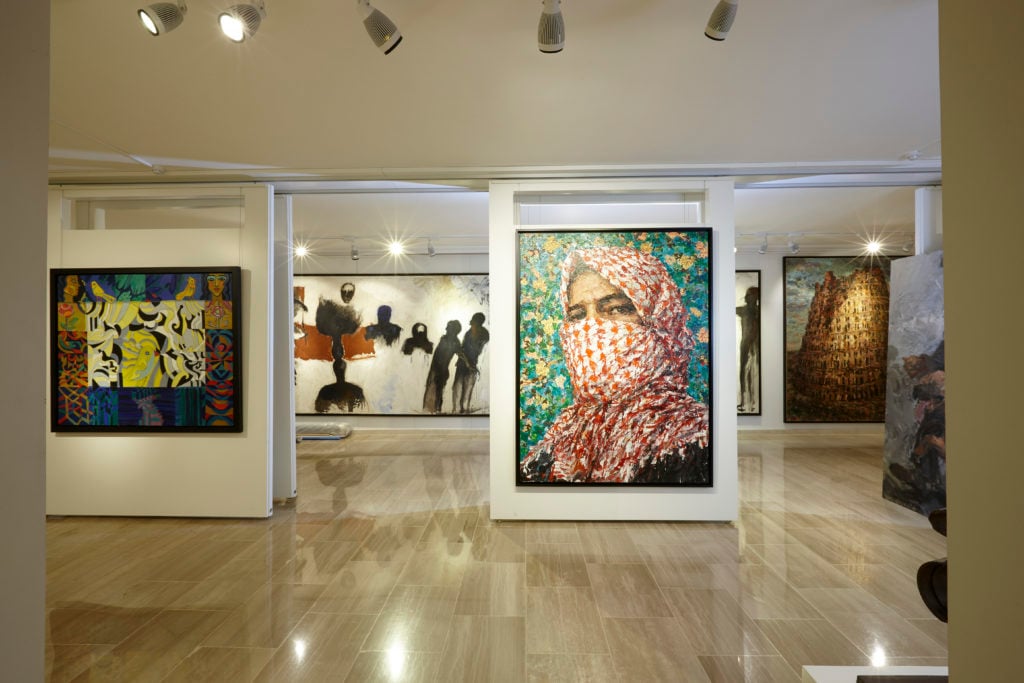
Installation view of the Ramzi and Saeda Dalloul Art Foundation (DAF). Courtesy of the Dalloul Foundation.
“To have the largest collection of Pan-Arab art in a city like Beirut will change the cultural landscape of the country and it will most certainly help the artists of the community both Lebanese and others,” says Basel Dalloul, Ramzi’s son, who has introduced a variety of high-tech apps to catalogue the works in the collection.
Finally, the Charles Corm Foundation has set out to develop “an active cultural meeting place,” according to architect and founder David Corm. Situated in Beirut’s pioneering skyscraper, the former headquarters of the first Ford cars in the Middle East and the family’s former residence is scheduled to open as a foundation in April 2020. It will offer exhibition space, lecture halls, a bookshop, restaurant, and a private library.
“It is a tough time over here and everyone is scrambling, but the community helps each other out,” Dalloul says. “We have lots of visitors from outside of town that assist as well by buying artworks to take back home.”
Hurdles to Surpass
For some dealers, however, the existing help is not enough. Annie Vartivarian, co-founder of the two-year-old Letitia Gallery, feels she must look beyond her local environment to stay afloat. “We are trying to grow the market for young artists from Lebanon and abroad but realize we need to expand and participate more in international art fairs to connect with stronger markets,” she says.
Some are now planning to leave Beirut entirely. “During a time of crisis, it’s important to keep a foot in a safe zone,” says Canadian dealer Nicolas Bellavance-Lecompte, who founded Carwan Gallery in 2010 as the city’s first gallery dedicated to collectible design.
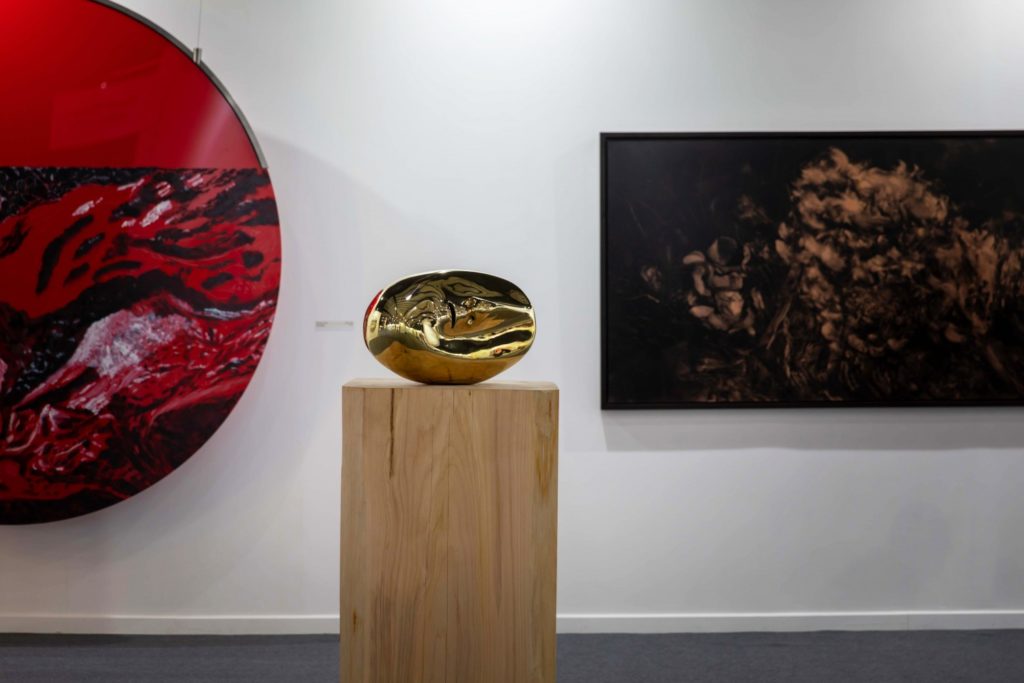
Installation view of Letitia Gallery’s booth at the Beirut Art Fair. Courtesy of Letitia Gallery.
“After a lot of reflection, I have come to the realization that I need to carve out a space with new fresh energy,” he says. This year, he plans to move Carwan Gallery from Beirut to Athens, a city “close enough to the Near East” that he can “continue operations from there.”
Others are making do at home, but facing challenges they never could have anticipated. “We are going through a huge crisis,” says Joumana Asseily, owner of Marfa’ Gallery, which opened in 2015. In June, Asseily was selected to show the work of Palestinian-Jordanian artist Saba Innab in Art Basel’s Statements section, a coveted spot. At Frieze London next week, she will showcase a series of drawings depicting different parts of Beirut by Lamia Joreige, marking her first participation with the fair.
But the new austerity measures have affected Asseily’s ability to transport artworks abroad—a particularly demoralizing challenge at a moment when her business should be taking off. Most recently, she tried to reclaim three works that were lent to a traveling exhibition in Europe, only to be asked at customs to pay for the objects as if she had purchased them.
“It’s a nightmare—now I have an issue with getting my works back to Beirut from Frieze if I don’t sell everything,” she says. Asseily has decided store any unsold works in Paris until the situation changes.
“I still have artworks stuck in customs—it’s been around eight weeks,” she adds. But “even if it is a struggle, I want to stay and work. There are great artists, a great scene, and amazing energy in Beirut.”
